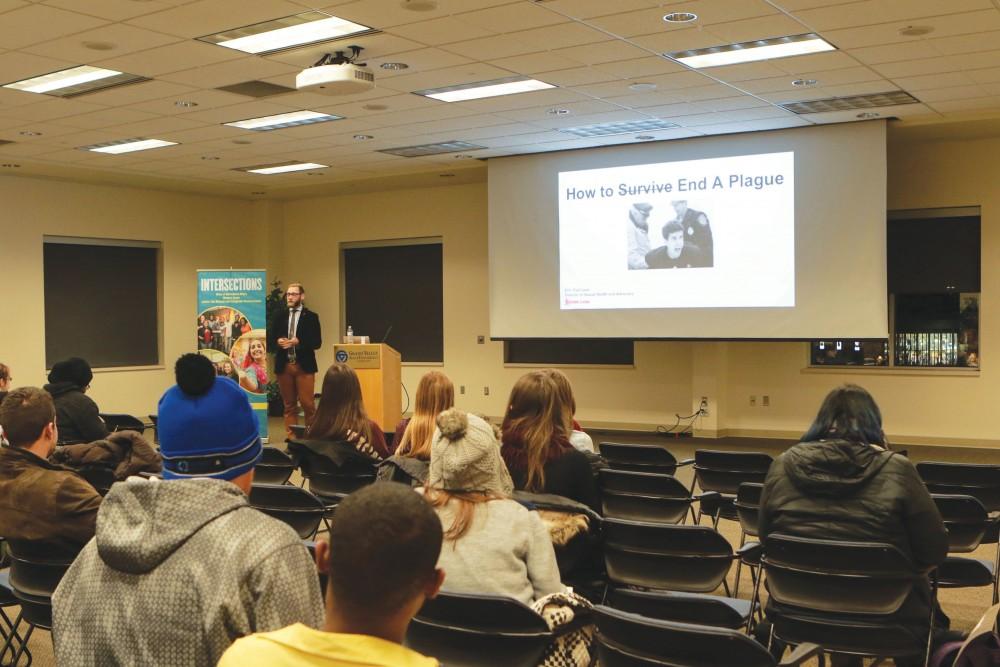GVSU observes World AIDS Day

GVL/Sara Carte – Eric Paul Leue presents “How to Survive End A Plague” for World AIDS day in the Kirkhof building on Tuesday, Dec. 1, 2015.
Dec 1, 2016
For decades, HIV and AIDS have been loaded acronyms burdened with wild speculation. Though education has enveloped the topics of HIV and AIDS within universities and even K-12 schools, there’s still work to be done.
Grand Valley State University will provide free, confidential HIV and STI testing on World AIDS Day, Thursday, Dec. 1 in the Kirkhof Center, to make testing safe and accessible for students and staff. The testing is paired with a conversation with Dave Watt, supervisor for AIDS prevention and early prevention services at Community AIDS Resource and Education Services (CARES) of Southwest Michigan.
CARES is a prevention, education and case management organization. Watt takes the additional role of reducing stigma around the disease, working closely with educational organizations to make that goal a reality.

“It’s something I think a lot of people still don’t know a lot of information on,” said Jen Hsu-Bishop, director of the Milton E. Ford LGBT Resource Center. “So we wanted to bring Dave Watt in to provide education on what we do know about HIV today, what the medical treatment is for HIV, as well as how we can fight stigma.”
Though medical truths about HIV and AIDS have emerged steadily since awareness on them skyrocketed in the 80’s, misconceptions about them have remained static. The biggest misconception that surfaced linked HIV closely with the LGBT community and it has remained there for some time. Medical industries have proved that the disease is treatable, preventable and doesn’t discriminate based on sexual orientation. Although, it does tend to effect a younger demographic.
“I think this is an important conversation to have because younger people are one of the only populations in the last 10 years in which number of incidents of HIV have continued to stay the same or increase,” Hsu-Bishop said.
Because of this frightening trend, Watt, along with the departments that make up GVSU Intersections have long been working to not only combat stigma, but misinformation as well. The two usually come together, though on GVSU’s campus, students have taken a broader approach to HIV and AIDS.
Many students have participated during past testing days, which has helped ground the idea of such an ominous disease. Many have exhibited a general approach: to stay healthy and protect partners without embarrassment. HIV and STIs in general are realities that everyone and anyone could face.
“Our role is to educate people on campus about things they just don’t know about or things that they’ve been taught as fact,” said Kristie Scanlon, assistant director of the Office of Multicultural Affairs. “We just want to broaden a knowledge base without saying ‘this is what you should believe.'”
Because students have been educated about HIV and AIDS differently, there’s no universal approach to further educating them now. Scanlon hopes that through hearing Watt speak about his experiences working with those affected by AIDS and through social media awareness, efforts to end the stigma and successfully fight the epidemic can be more successful.
“Unfortunately, it sometimes happens that people don’t talk about it unless it’s personally impacting them,” she said. “It would be great if we didn’t have to do this work anymore. Unfortunately I think there’s a lot more work to be done.”





















